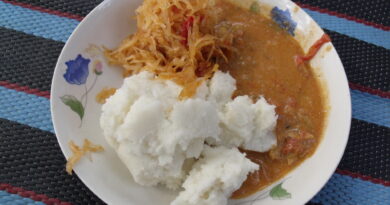Tajine
Tajine: A Culinary Odyssey Through Morocco’s Flavorful Tradition
Introduction
In the heart of North Africa, where the air is scented with a medley of spices and the landscape is adorned with vibrant markets, there exists a culinary tradition that has enchanted taste buds for centuries – the Tajine. This iconic dish, named after the earthenware pot in which it is cooked, weaves together the rich tapestry of Moroccan cuisine. Join us on a culinary odyssey as we delve into the origins, ingredients, preparation, and cultural significance of Tajine, unlocking the secrets behind this aromatic and visually stunning dish.
Origins of Tajine
The roots of Tajine can be traced back to the Berbers, the indigenous people of North Africa, who crafted the distinctive conical clay pot that bears the same name. The word “Tajine” itself is derived from the Arabic word “tājīn,” meaning “earthen pot” or “slow-cooked stew.” Over the centuries, the dish evolved and absorbed influences from various cultures, including Arab, Andalusian, and Ottoman, resulting in the diverse and flavorful variations we see today.
The Tajine pot, with its unique design that allows steam to circulate and condense, is a testament to the ingenious cooking methods developed by the Berbers. This centuries-old technique not only preserves the moisture and flavor of the ingredients but also imparts a distinct tenderness to the slow-cooked dishes.
Ingredients that Define Tajine
Tajine is a versatile dish that can feature a myriad of ingredients, reflecting the diverse bounty of Morocco’s landscapes. However, some core elements define the essence of Tajine:
- Meat: While Tajine can be made with various proteins, lamb is a classic choice in Moroccan cuisine. Other meats like chicken, beef, or fish may also be used, offering a range of flavor profiles.
- Vegetables: Tajine often incorporates a colorful array of vegetables, such as carrots, tomatoes, zucchini, potatoes, and bell peppers. This not only enhances the visual appeal but also adds layers of flavor to the dish.
- Dried Fruits: The inclusion of dried fruits like apricots, prunes, or raisins contributes a delightful sweetness that balances the savory and aromatic spices.
- Spices: The heart and soul of Tajine lie in its spice blend. Commonly used spices include cumin, coriander, cinnamon, paprika, turmeric, and saffron. This intricate spice palette creates a symphony of flavors that define Moroccan cuisine.
- Preserved Lemons: A distinctive element in many Tajine recipes, preserved lemons add a tangy and salty kick, infusing the dish with a unique brightness.
- Olive Oil: A generous drizzle of high-quality olive oil not only imparts richness but also ties together the flavors of the ingredients.
- Couscous or Bread (Serving Base): Tajine is often served over a bed of fluffy couscous or accompanied by crusty Moroccan bread. These side staples complement the saucy nature of the dish, soaking up the flavorful juices.
Preparation of Tajine
The preparation of Tajine is a culinary art that requires patience and a meticulous hand. The process typically involves the following steps:
- Marination: Meat is often marinated with a combination of spices before cooking. This step allows the flavors to penetrate the meat, resulting in a more nuanced taste.
- Layering: Ingredients are carefully layered in the Tajine pot, with meat placed at the bottom and vegetables arranged on top. This thoughtful layering ensures that each component absorbs the flavors of the others.
- Spice Infusion: The spice blend, often prepared separately, is generously sprinkled over the layered ingredients. This step is crucial in creating the aromatic and complex flavor profile of Tajine.
- Slow Cooking: The Tajine pot, with its conical lid, is placed over low heat, allowing the ingredients to slowly simmer and meld together. This gentle cooking process is instrumental in achieving the desired tenderness and depth of flavor.
- Preserved Lemons and Dried Fruits: Towards the end of the cooking process, preserved lemons and dried fruits are added to the Tajine, infusing the dish with their distinctive tastes.
- Finishing Touch: A final drizzle of olive oil and a sprinkle of fresh herbs like cilantro or parsley add a burst of freshness to the finished Tajine.
Cultural Significance of Tajine
Beyond its culinary excellence, Tajine holds a special place in Moroccan culture, symbolizing hospitality, tradition, and the art of communal dining.
- Social Rituals: Tajine is often associated with gatherings, celebrations, and communal feasts. Sharing a Tajine is a social ritual that brings people together, fostering a sense of connection and unity.
- Symbol of Hospitality: In Moroccan homes, offering a Tajine to guests is a gesture of warmth and hospitality. The dish is a symbol of generosity and an expression of the host’s desire to make guests feel welcome.
- Culinary Heritage: Tajine is a proud representation of Morocco’s culinary heritage. Passed down through generations, the art of preparing and enjoying Tajine is a cultural legacy that continues to thrive.
- Seasonal Adaptability: The versatility of Tajine allows it to adapt to the changing seasons. Ingredients can be adjusted based on what is fresh and in season, making it a dynamic and ever-evolving dish.
- Artistry in Cooking: The careful layering of ingredients, the artful arrangement of spices, and the slow-cooking process showcase the artistry involved in Moroccan cuisine. Tajine is a testament to the meticulous craftsmanship of Moroccan cooks.
- Sensory Experience: From the tantalizing aroma that wafts through the air during cooking to the visually stunning presentation of the finished dish, Tajine engages multiple senses, creating a holistic and memorable dining experience.
Conclusion
In the kaleidoscope of Moroccan cuisine, Tajine emerges as a masterpiece that encapsulates the essence of the nation’s culinary artistry. It is not merely a dish but a celebration of flavors, a symbol of togetherness, and a testament to the time-honored traditions that shape Moroccan culture.
As you savor the aromatic and succulent bites of Tajine, you embark on a journey through Morocco’s storied past and vibrant present. So, whether you experience this culinary marvel in the bustling markets of Marrakech or recreate it in your kitchen, let Tajine be your passport to the captivating world of Moroccan gastronomy.



